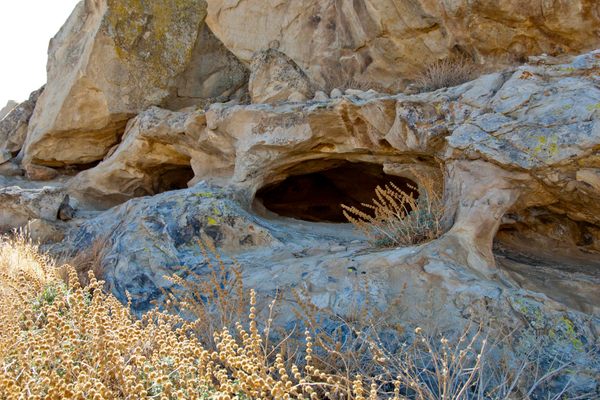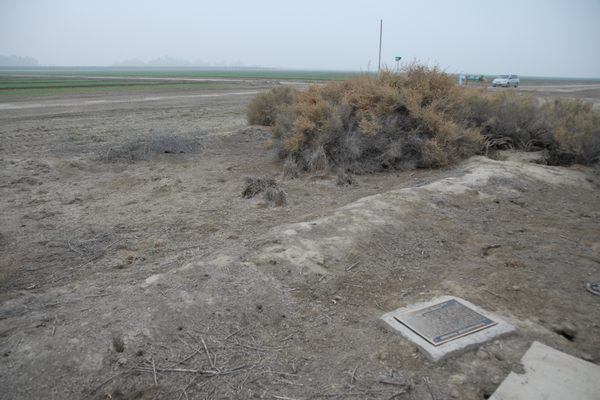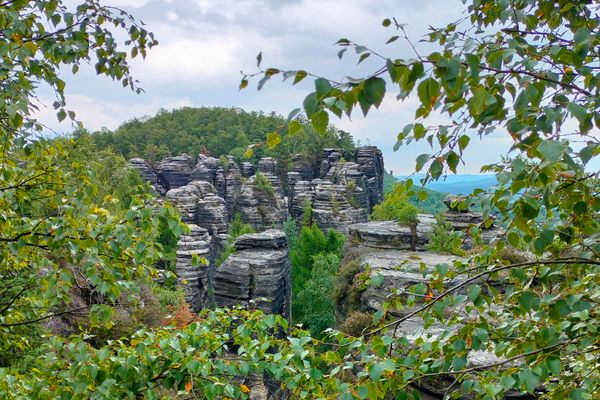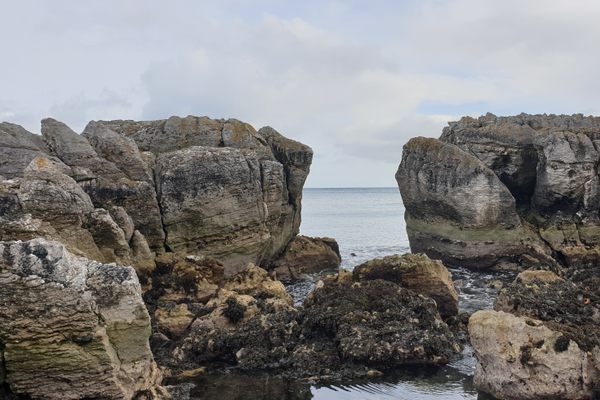The 750 mile San Andreas fault is the boundary between the Pacific Tectonic Plate and the North American Tectonic Plate in California. The fault’s most quintessential features are located in the Carrizo Plain National Monument in San Luis Obispo County. Wallace Creek, an intermittent ravine flowing west out of the Temblor Range, crosses the San Andreas Fault in the northeastern corner of the monument.
The creek once followed a straight path from the North American Plate onto the Pacific Plate. However, as the Pacific Plate moved northwest and the North American Plate moved southeast, the Pacific Plate section of Wallace Creek moved northwest of the North American Plate. The east-west-flowing creek eroded a channel that makes a 90-degree turn to the north along the San Andreas Fault, and then another 90-degree turn to the west.
The section along the San Andreas Fault lengthens with every earthquake that hits the region. Two older channels of Wallace Creek are visible in the distance, separated from their water source by the fault. Along with having a perfect example of a creek offset by a fault, this portion of the San Andreas Fault is quite conspicuous, meaning it’s possible to stand on two tectonic plates at once.
Know Before You Go
Wallace Creek is located on the eastern side of the northern part of Elkhorn Road in the Carrizo Plain National Monument. There is a "road closed" sign at both ends of the road, but the signs are never updated. That being said, it's best to drive along Elkhorn Road in the morning as afternoon storms can bring flash flooding.
Besides the San Andreas Fault, the Carrizo Plain National Monument is known for occupying two mountain ranges and a vast valley in between; home to one of the largest remnants of the California grassland. There are also superb Chumash petroglyphs, a salt lake known for Sandhill cranes in the winter, and annual springtime blooms, among the most spectacular in the state.




















Follow us on Twitter to get the latest on the world's hidden wonders.
Like us on Facebook to get the latest on the world's hidden wonders.
Follow us on Twitter Like us on Facebook